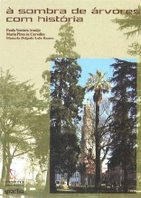O cedro e o átomo

Foto: pva 0506 - cedro-do-Líbano nos Kew Gardens
É o carbono que, numa miríade de combinações e formas, torna possível a vida na Terra. Primo Levi, no último capítulo de A tabela periódica (livro de 1975), imagina as sucessivas migrações de um único átomo de carbono - que ele não conhece mas cuja existência é estatisticamente inevitável. Depois de a acção do homem pôr termo à quietude de milhares de anos num sedimento de rocha calcária, o átomo é libertado para a atmosfera. Fisgado por uma folha de videira, bebido como vinho, expelido do organismo como dióxido de carbono, eis que o imprevisível jogo dos ventos o transporta até ao Líbano, onde outra vez a fotossíntese o integra na vida orgânica:
«Our atom is again carbon dioxide, for which we apologize: this too is an obligatory passage; one can imagine and invent others, but on earth that's the way it is. Once again the wind, which this time travels far; sails over the Apennines and the Adriatic, Greece, the Aegean, and Cyprus: we are over Lebanon, and the dance is repeated. The atom we are concerned with is now trapped in a structure that promises to last for a long time: it is the venerable trunk of a cedar, one of the last; it is passed again through the stages we have already described, and the glucose of which it is a part belongs, like a bead of a rosary, to a long chain of cellulose. This is no longer the hallucinatory and geological fixidity of rock, this is no longer millions of years, but we can easily speak of centuries because the cedar is a tree of great longevity.»
[trad. Raymond Rosenthal, edição Everyman's Library, 1995]
P.S. Em 1998 a Gradiva publicou este livro com o erradíssimo título O sistema periódico, em edição há muito esgotada.





Sem comentários :
Enviar um comentário